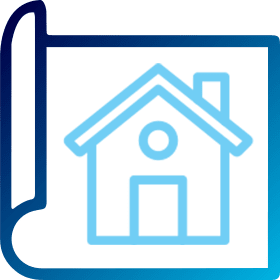National Design Code: What is 'beautiful'?
Design | Blog
With new priorities for both the government and homeowners triggered by the pandemic, the planning sector has had to adapt. To meet these changes, the government has issued a 10-point plan to improve living standards, named the National Design Code. This forms part of the Planning Practice Guidance. It aims to help developers reach higher liveability standards and create ‘beautiful’ homes in thriving communities.
The Design Guide illustrates how well designed places that are beautiful, greener, enduring and successful can be achieved in practice. However, what does ‘beautiful’ really mean, and what are the advantages and disadvantages of this new code?
What is the National Design Code?
The National Design Code outlines 10 points for developers to follow when designing a home. The two main focuses are quality and sustainable building. However, it also highlights the need to keep properties in tune with local communities as well as create homes that meet peoples’ evolving needs.
Each of the 10 principles shows what the government’s goals are for properties in the coming years. They are:
-
- Lifespan – Creating homes that are made to last.
-
- Context – Enhancing the location and taking advantage of local characteristics.
-
- Identity – Making every home attractive and distinctive.
-
- Built form – Considering surroundings to create a coherent development.
-
- Movement – Making accessibility a key feature.
-
- Nature – Enhancing nature and green spaces.
-
- Public spaces – Creating a place with the community at its heart, offering a range of social areas.
-
- Uses – Mixed use of the land.
-
- Homes and building – Building for tomorrow, with functionality and sustainability in mind.
-
- Resources – Using resources efficiently to maximise their uses.
Beauty is in the eye of the beholder
The ambitious framework discusses ‘beautiful’ places. Beauty is, of course, a subjective quality. However, according to the government’s chief architect, a beautiful home will be one that perfectly addresses the 10-points outlined.
Beauty may be subjective, but quality is not. Perhaps using the Code as a base to design on will be the best use of the framework, giving projects direction without forcing designers to lose their flair.
What are the pros and cons?
The major pros of the proposed National Design Code include the emphasis on the role that local authorities and communities play in the design of places, and the clear framework that it provides to house designers.
On the other hand, the emphasis on local culture could be a difficult goal to achieve. Councils will have varying aspects they would like to focus on and different resources available, so it may be a challenge for developers to reach a finalised plan that ticks every box.
There’s also the possibility that the framework could force developers to ‘design by numbers’, creating housing developments with little personality.
Although the National Design Code provides developers with a great foundation, it’s important for designers to bear in mind that ‘beauty’ is subjective. However, by building on the 10 points and working closely with local authorities, developers will be able to achieve the results desired by both the government and homeowners.
Contact us
For any further information contact Richard Cooke or David Pendle in our dedicated planning consultancy team, Marrons Planning.
Our updated guide to recovery and resilience covers everything you need to navigate your business out of lockdown, unlock your potential and make way for a brighter future. Further advice in relation to COVID-19 can be found on our dedicated coronavirus resource hub.
From inspirational SHMA Talks to informative webinars, we also have lots of educational and entertaining content for life and business. Visit SHMA® ON DEMAND.
About Marrons
Marrons is a multi-service development consultancy backed by the experience of working for local authorities, extensive market intel and connections across the industry - from planning offices and private landowners to housebuilders and retailers.
With expertise in Planning, Architecture, Design, Heritage and Economic Development, you can trust us to lead, protect and enhance the value of your land or building assets ensuring we turn your plans into reality.
Talk to our Design experts
We act on behalf of a range of clients across the UK to deliver economic, social and environmental regeneration. Our specialists are here you turn your vision into reality.
Our Latest Design News & Updates
Our Areas of Expertise

Planning
Whether you are looking for advice on an appeal for a major development scheme, or putting in an application for a house extension, we can help you navigate the best way forward.


Architecture
Led by RIBA Chartered Architects, our Architects have wide-ranging experience in handling large scale projects through multi-disciplinary teams, often acting as project co-ordinators and design team leaders.


Design
Our urban design team have a wealth of experience in both large scale urban development and detailed design and can help you make the most out of your land and provide a clear vision for your development.


Heritage
Our heritage team proudly advocate for the role of heritage in sustainable place-shaping, and champion the value that heritage assets can bring to developments.


Economic Development
Our specialist team works with you to provide evidence that your land or planning development has commercial benefits, and positively impacts socio-economics in the wider community.





